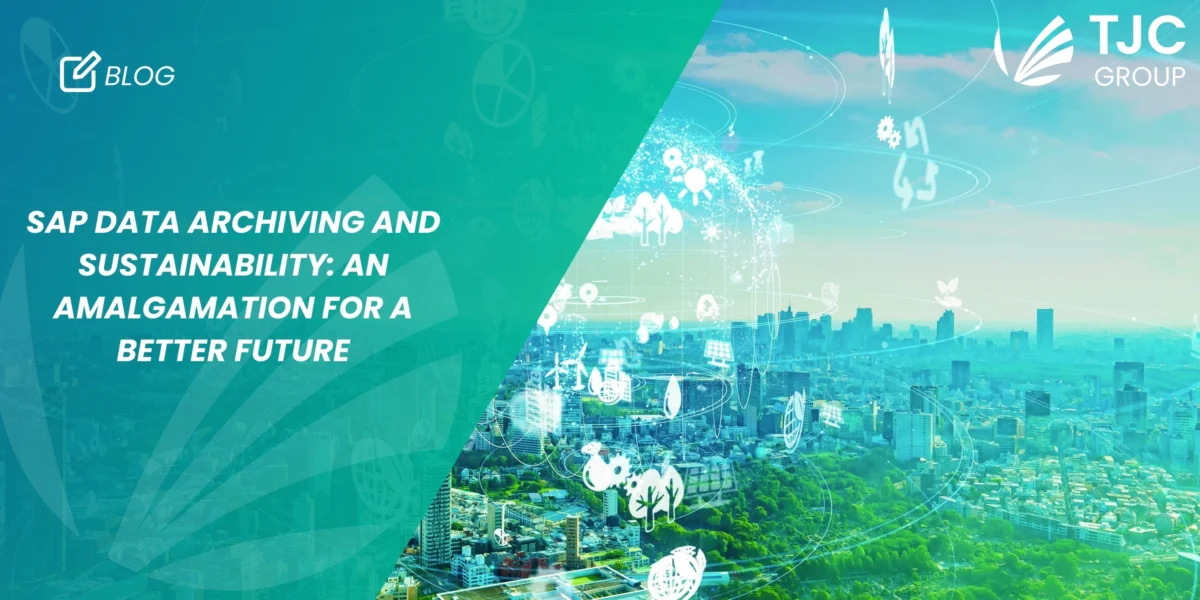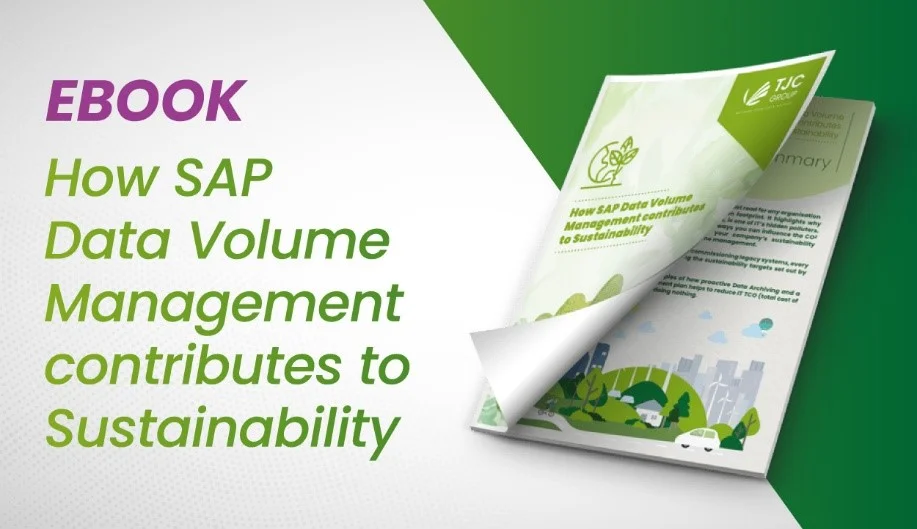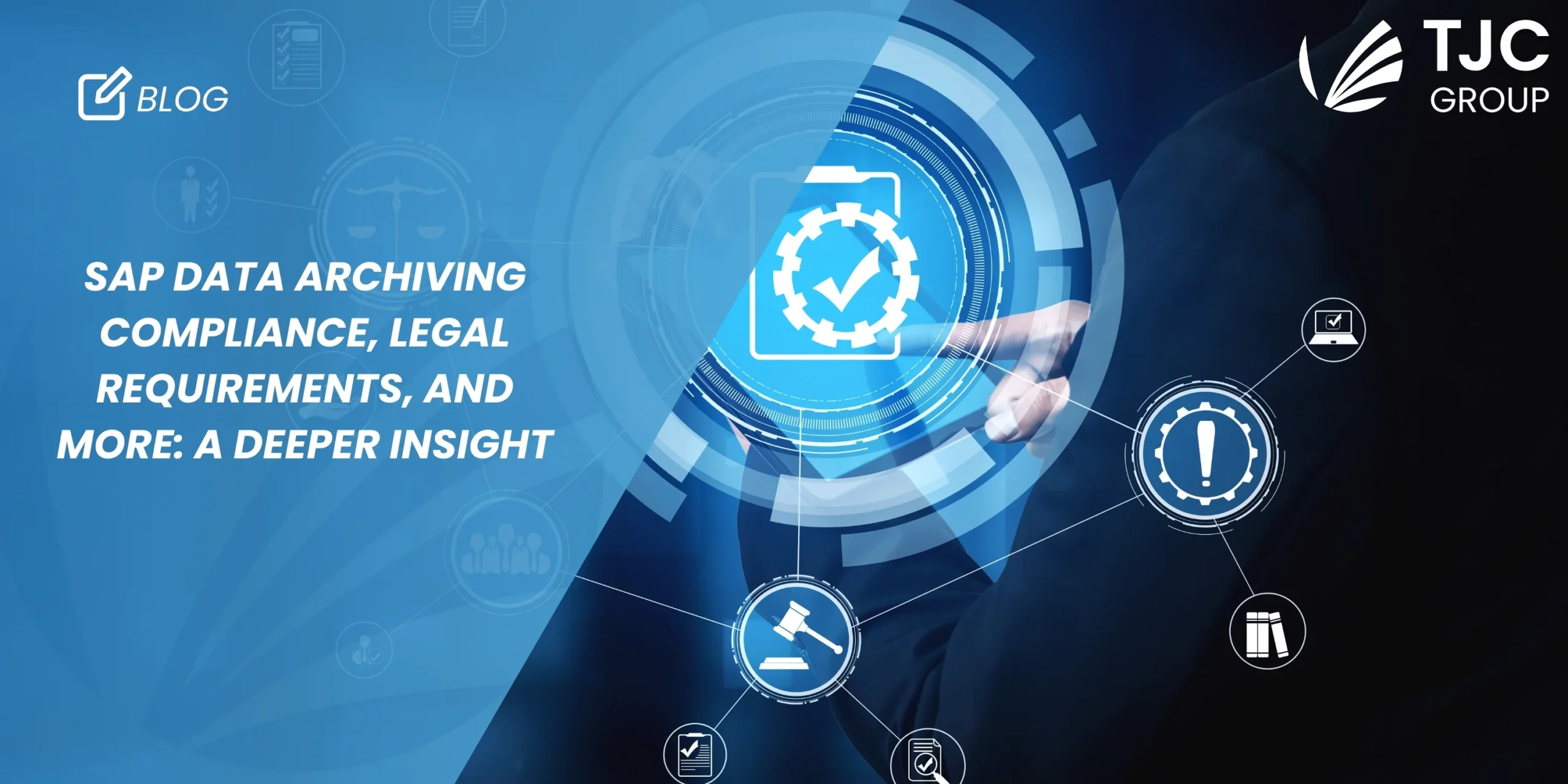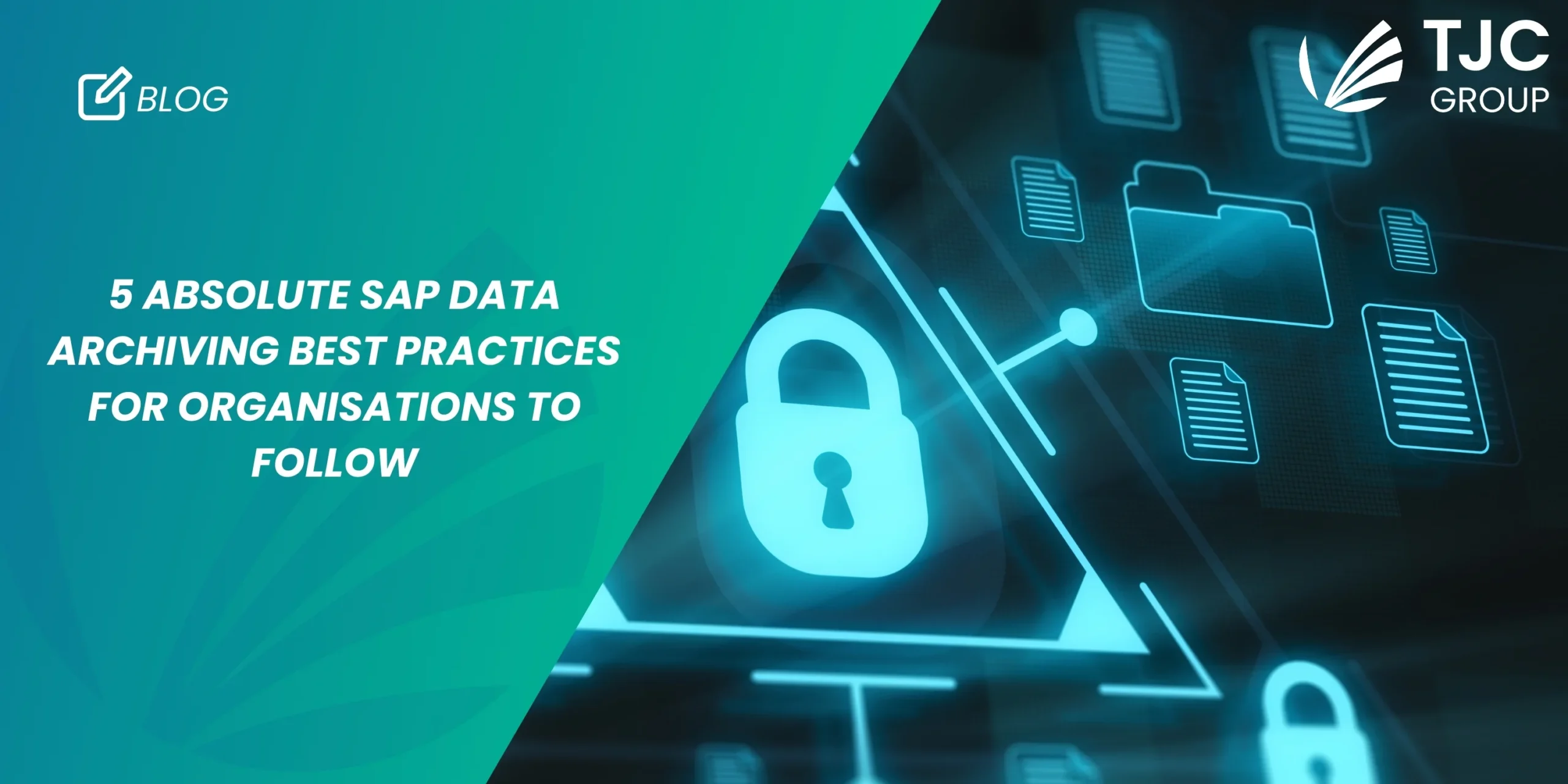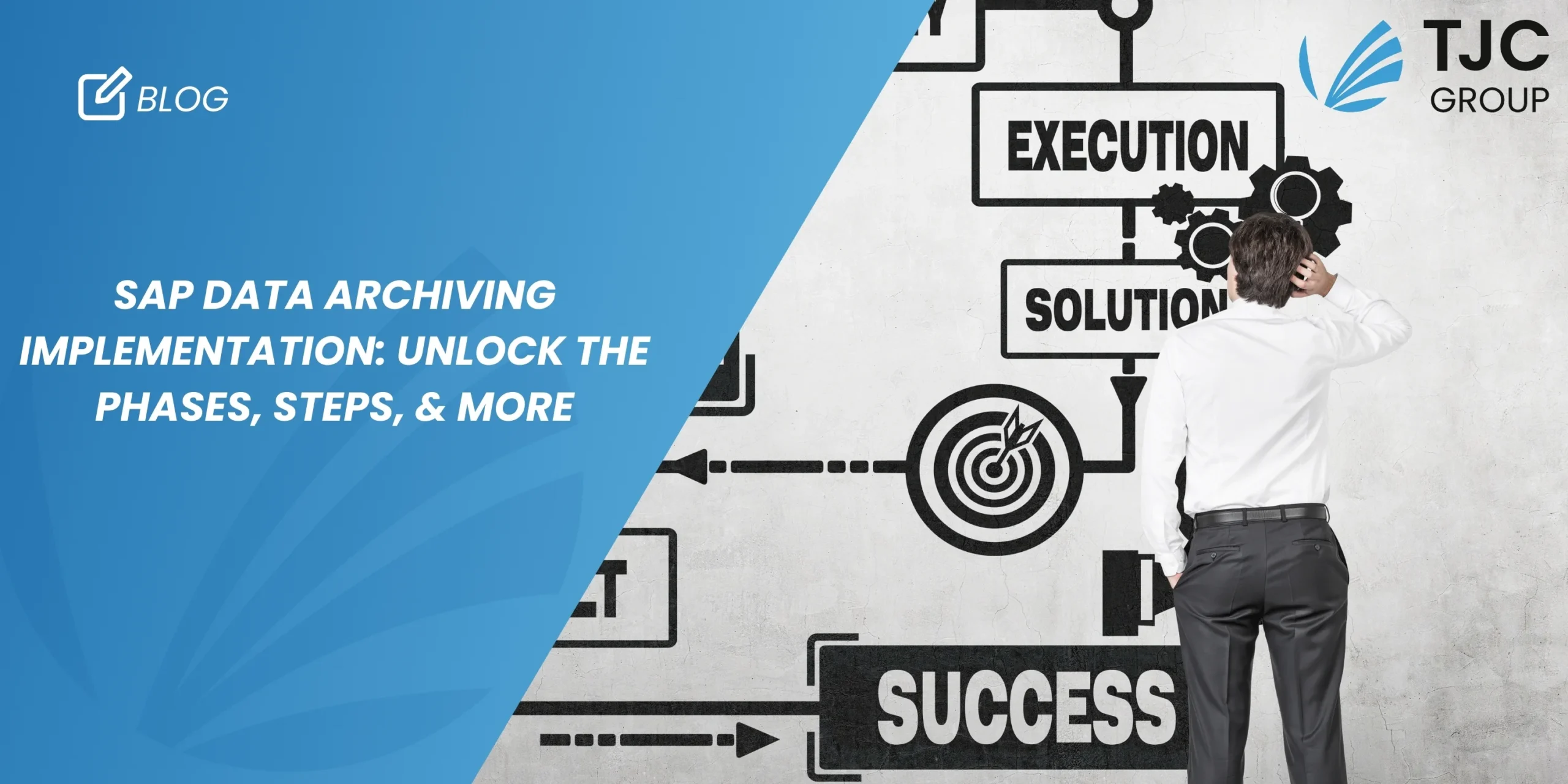Author: Priyasha Purkayastha, Global Content Manager, TJC Group
Unmanaged data can harm the environment significantly. While data growth cannot be stopped, it can certainly be managed with SAP data archiving. Sustainability, as a matter of fact, is an important need of the hour. Read our blog to learn how data archiving can help achieve your organisation’s sustainability targets and contribute to the reduction of digital CO2 emissions.
Table of contents
Introduction
In today’s ever-growing digital world, we often forget about the impact it has on the environment. Everyone is aware of the different sorts of pollution, such as air pollution, noise pollution, and so on, that affect the environment. But what about corporate pollution? Do you know what it means? Corporate pollution generally relates to factors like plastic wastes, smoke fumes, toxic effluents, and so on, released into the atmosphere. However, these are aspects that we can see; there are hidden ones as well, like digital pollution.
An interesting aspect that we would like to illuminate is the contribution of data growth to increasing the digital carbon footprint. Surprisingly, data growth is one of the largest hidden IT polluters, accounting for 3 to 4% of the worldwide carbon emissions digitally. Therefore, managing this growth is essential, and SAP data archiving is truly one of the best ways to ensure this.
Impact of data growth on the environment
There has been a significant surge in organisations to reduce the digital carbon footprint and focus on sustainability. However, it is not surprising as the data volume continues to grow rapidly.
A survey conducted found that approximately 70% of the respondents agreed that data volumes are growing at a minimum annual rate of 10% or higher. Organisations have also reported an annual increase in their storage growth—52% said the growth was between 10% and 24%, while 17% reported a higher rate between 25% and 49%.
While the surge in data growth will continue, if organisations overlook the growth, there will be additional consequences. Most likely, not only will the volume grow, but the cost of storing the data will also increase. Moreover, if data is left unchecked, the volume will double every two years. Wondering how? Click on the button below to learn more!
Hidden costs of data centres
Before moving ahead with how SAP data archiving helps with sustainability, let’s give you an overview of the hidden costs that data centres can accumulate.
Managing data, in general, can be a tedious task. With excess data, it becomes double challenging as data centres require large amounts of electricity to store them. Back in 2020, data centres consumed energy of around 3.5% of the total CO2 emissions globally. That said, by 2040, the percentage is expected to grow by nearly 40%. As a matter of fact, in 2025, it is expected that data centres will consume 20% of the total electricity worldwide. Unfortunately, this is far more than what the other industries are consuming combined. Poor management of data can lead to serious damages not only financially but also environmentally. In today’s world, being green and contributing to sustainability is the need of the hour.
Think about this: In 2010, IDC estimated that 1.2 zettabytes (1.2 trillion gigabytes) of new data were generated that year—over 40% more than the previous year. At the time, they projected that new data creation would reach 35 zettabytes (35 trillion gigabytes) by 2020. While that may have seemed like an enormous figure, reality surpassed expectations, hitting those levels two years ahead of schedule. IDC has since revised its 2020 forecast to 175 zettabytes (175 trillion gigabytes), marking a staggering increase of 99%. That’s been 5 years since the statistics were revised; can you imagine the current rate at which data might be growing, given all the digitalisation across the world? Fortunately, here’s where SAP data archiving comes into the picture.
Sustainability with SAP archiving: A strategic way forward
It is imperative to understand that a massive amount of energy gets utilised when creating and storing data, leading to colossal impacts on the environment. Apart from doubling in two years, if organisations leave data unchecked, it contributes to becoming an invisible polluter. Additionally, a lot of energy gets wasted in storing obsolete data, leading to a rise in digital carbon emissions. Thankfully, SAP archiving for sustainability happens to be one of the most effective ways of managing data growth.
SAP data archiving’s role in curbing CO2 emissions
If you ask any expert or turn the pages of history, you will find that there are two major reasons for investing in data management, namely –
- To minimise the cost of excess data storage
- To enhance the overall performance of the systems
However, in today’s age, there is a third primary reason, which is enhancing sustainability and reducing the digital carbon footprint of IT organisations.
Here’s how, with SAP archiving, organisations can tackle all three reasons efficiently –
- Data archiving helps move data from the main system, leading to a reduced consumption of energy.
- With automated data archiving, organisations can ensure ongoing compression of data.
- Additionally, organisations can ensure corresponding cost reduction associated with data storage.
- Furthermore, SAP data archiving helps reduce operational costs for managing the SAP landscape, such as servers, electricity, and so on.
These benefits of data archiving trigger the four major environmental advantages, which are as follows:
- There is a lowered consumption of physical storage discs
- Organisations can ensure lowered heating and cooling costs within the server rooms
- There are reduced amounts of digital waste and disposal costs
- Additionally, maintenance charges also decrease.
For SAP archiving in sustainability, our experts have created a thoroughly researched e-book that will help you learn more about how overall data management can curb digital carbon emissions.
Click on the banner below to download the detailed e-book now:
The final word
In tandem with green initiatives, SAP data archiving also helps with essential operational cost savings; comes with a significant impact on enhancing system performance, and much more. Not to forget, the process also offers complete data backups, quicker recovery of data in case of disruptions, and improved business continuity. All these benefits, in return, prepare data for a smoother S/4HANA migration.
As per various research reports, data management for migration, with its sheer volume, turned out to be the biggest obstacle when switching to SAP S/4HANA from SAP ECC. Therefore, along with tremendous contributions to sustainability, SAP archiving also contributes to the long-term transition to the SAP cloud. This, in fact, makes archiving a necessary part of an organisation’s IT housekeeping routine.
While ensuring so many different aspects of data management can be overwhelming for organisations, TJC Group is here for you. With 25+ years of experience, we have managed data with SAP data archiving for several clients, ensuring lower carbon emissions, better savings, and much more. Contact us now to learn more and join forces to achieve your green initiative targets and overall enhanced system performance.


